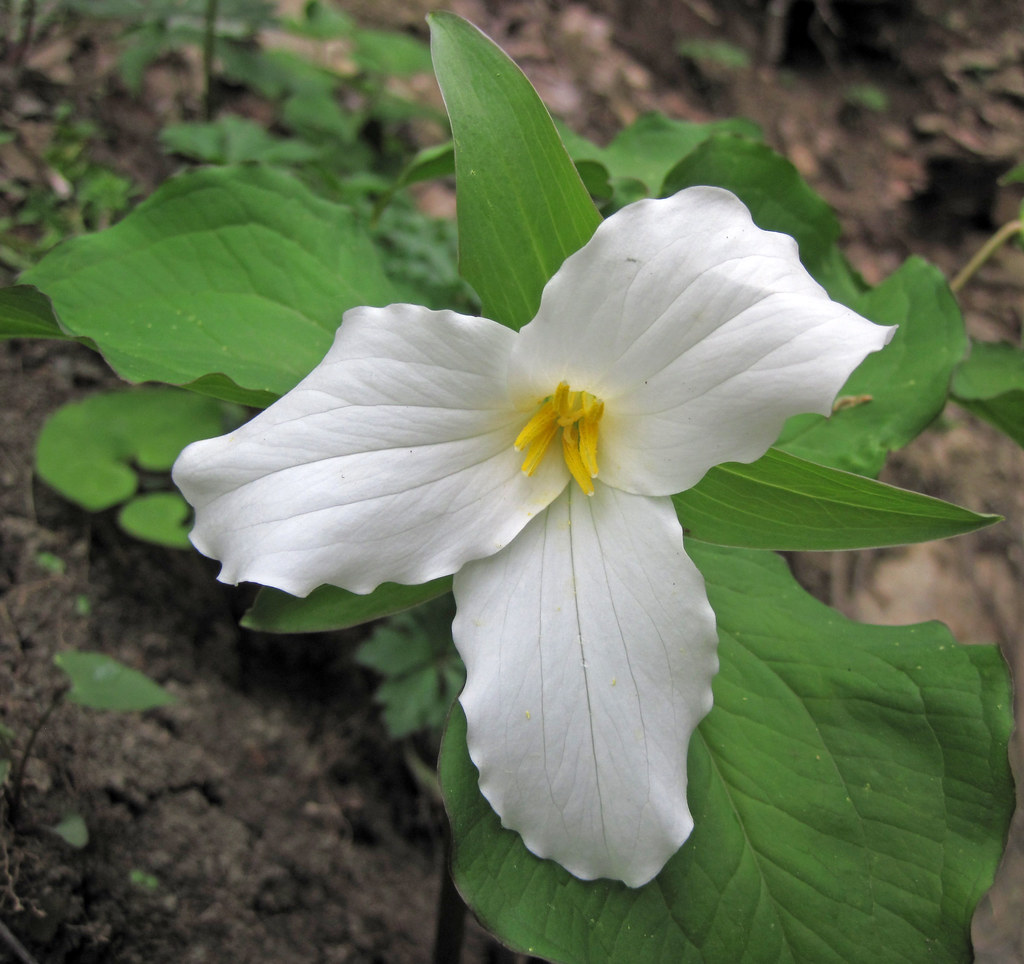Trillium: Good things come in threes

MILAN, Ill. — Found in rich, moist woodlands, trillium is an easily identified, distinct plant and flower. As the name suggests, the number three is closely tied to the species.
Trillium is a unique plant given it does not technically have above-ground stems or leaves. What we identify as leaves are morphologically bracts or modified leaves. The bracts of trillium are capable of photosynthesizing, contributing to the production of plant energy. What we identify as stems are extensions of the rhizome known as a peduncle. Stems are below ground and produce modified scale-like leaves called cataphylls.
Emerging from a rhizome, a single, smooth stem produces a single whorl of three bracts. The bracts of many species are mottled with lightly contrasting colors of green. Above the bracts, a single flower develops with three petals. Depending on the species, flowers are white, cream, purple, pink, or dark red.
Trillium spp. are sorted into two major groups: pedicellate and sessile trillium. Botanically, the pedicle is a stem that extends a leaf or flowers away from a plant. Trillium spp. in the pedicellate group has the flower extended from the whorl of bracts on a pedicle. The flower is upright above the bracts or “nodding” below the bracts. Trillium in the sessile group lacks a pedicle and the flowers appear to emerge from the bracts.
Common names of Trillium spp include Birthroot, a name given by the earliest settlers believing that indigenous people used the root to induce labor and other childbirth-related issues although this has not been verified. Other medicinal uses of the plant include extensive use of the root’s astringent and antiseptic qualities on wounds and sores.
Trillium prefer moist, organic matter-rich soil and partial to the full shade of woodlands. Seedlings are slow to mature, taking two to three years to produce fully developed bracts. Young plants will appear as thin leaves poking out of the soil. Flowers take longer to develop, up to seven years in some species. Seeds are a favorite food source of ants who are attracted to the small, nutritious, fat-rich structures attached to seeds called elaiosomes. Seed dispersal is a result of ants harvesting the seeds, transporting them for the elaiosomes, and discarding the seeds along the way.
Their unique, early blooms are appealing to homeowners and many species are suitable for the home landscape however plants should only be obtained from reputable providers to ensure wild populations are preserved.
- Prairie trillium (Trillium recurvatum)
- Great White Trillium (Trillium grandiflorum)
- Nodding Trillium (Trillium cernuum)
Miss Clipping Out Stories to Save for Later?
Click the Purchase Story button below to order a print of this story. We will print it for you on matte photo paper to keep forever.

